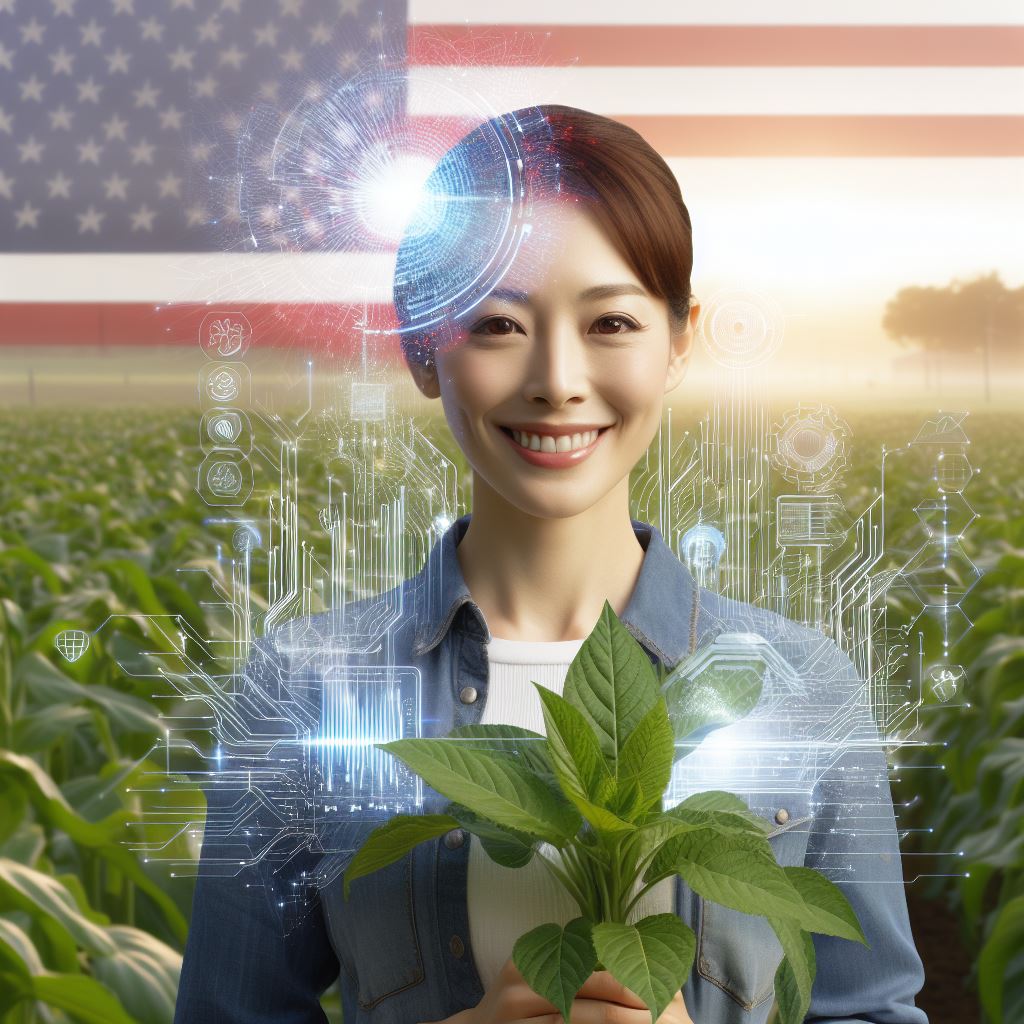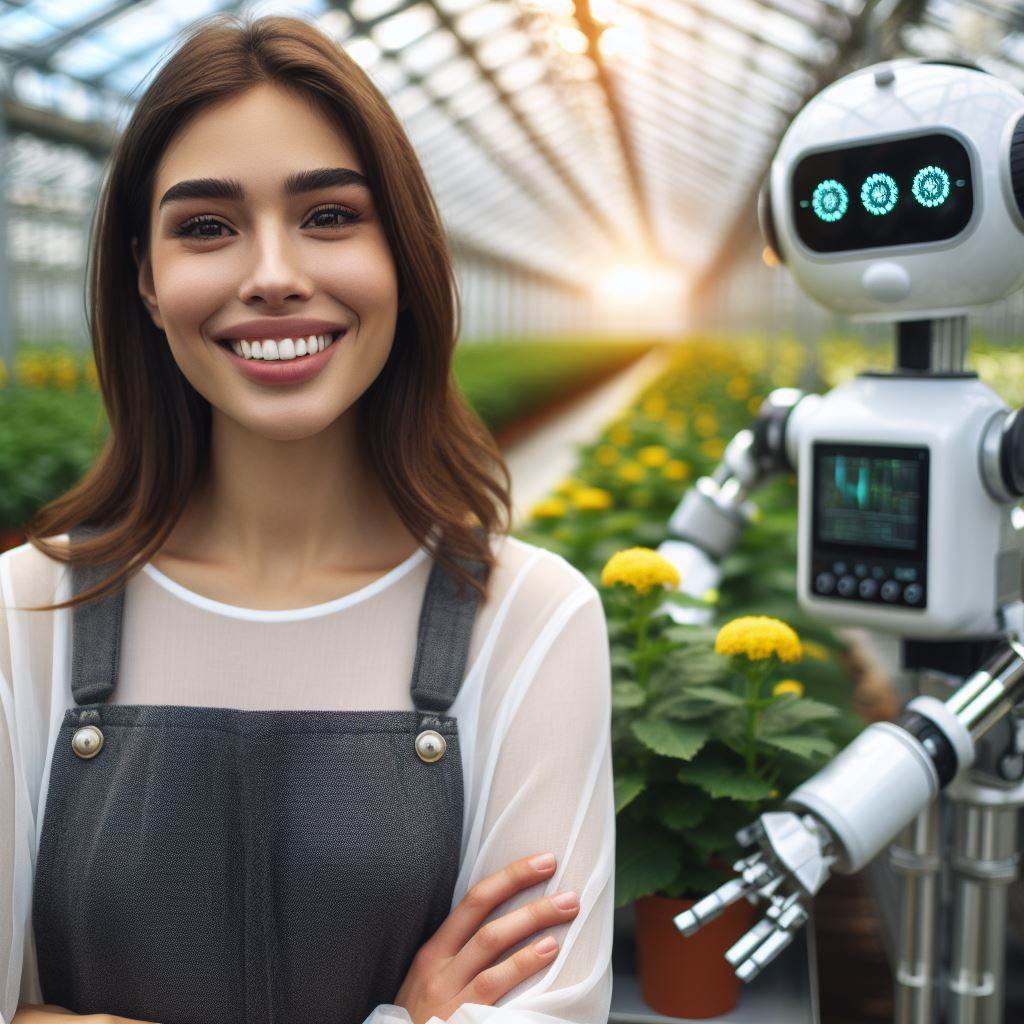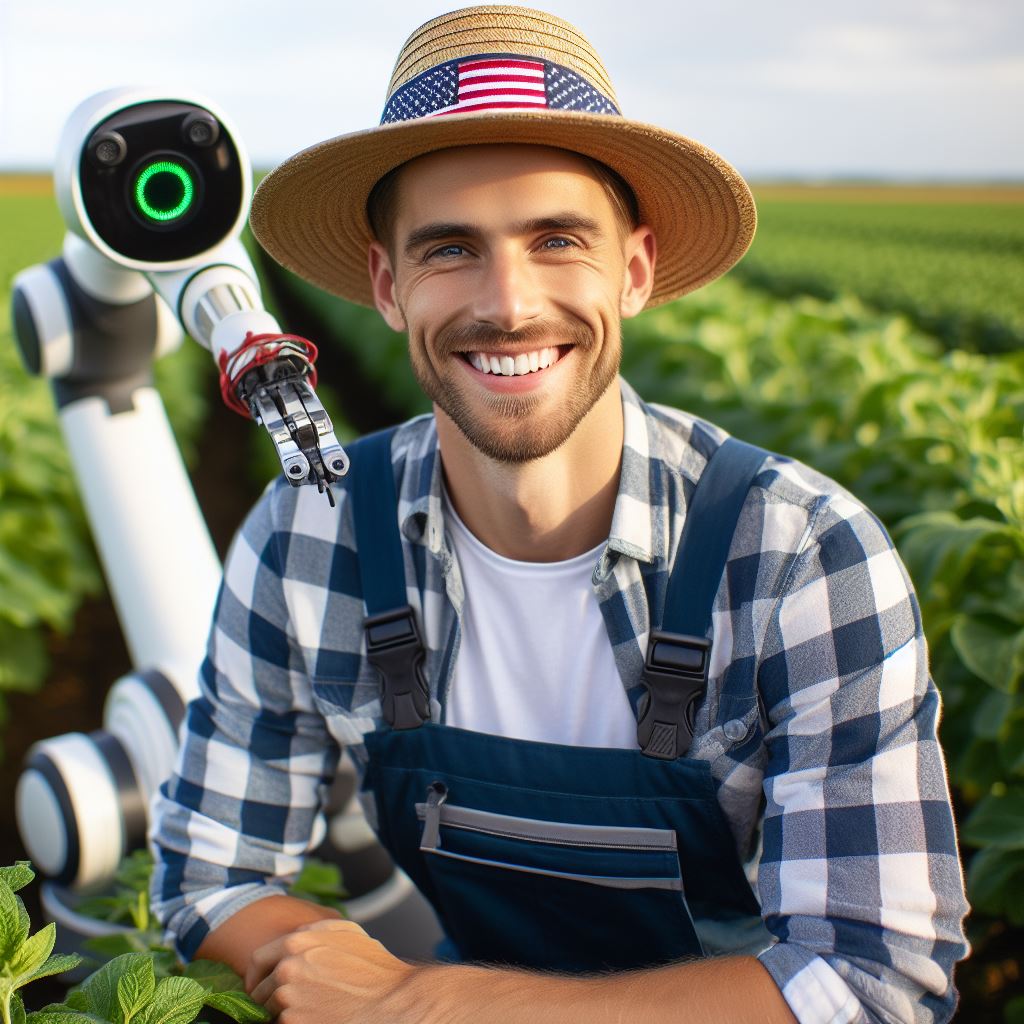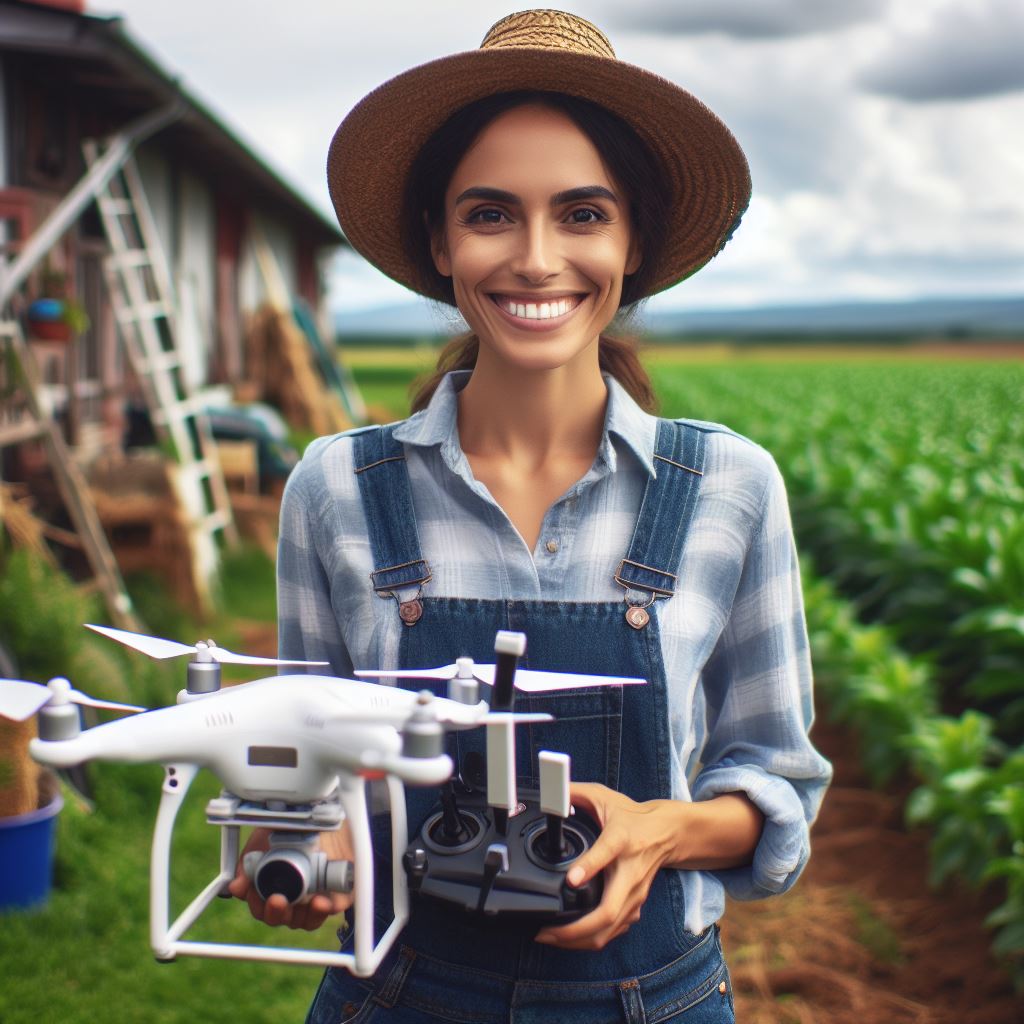Introduction
Greenhouses play a crucial role in modern agriculture by providing controlled environments for crop cultivation.
They enable year-round production, protection from adverse weather conditions, and increased productivity.
However, to further enhance efficiency and output, automation has become a vital component in greenhouse operations.
By integrating automation systems, greenhouses can optimize resource allocation, reduce labor requirements, and provide precise control over various environmental factors such as temperature, humidity, light, and irrigation.
This level of precision enhances crop development and leads to higher yields.
Automation in greenhouses includes the use of advanced technologies such as sensors, actuators, and monitoring systems.
These technologies enable real-time data collection, analysis, and decision-making.
For instance, sensors can detect temperature fluctuations or nutrient deficiencies, triggering automated adjustments to maintain optimal growing conditions.
Furthermore, automation can streamline labor-intensive tasks like seeding, transplanting, and harvesting.
Robotic arms and conveyor systems are employed to perform these activities more precisely and efficiently than human labor, ultimately reducing costs and increasing productivity.
The benefits of automation in greenhouses extend beyond productivity improvements.
By reducing reliance on human labor, it also addresses the increasing scarcity of agricultural workers, especially in developed countries.
Additionally, automation reduces the environmental impact by minimizing resource wastage and maximizing energy efficiency.
In general, greenhouses play a significant role in modern agriculture, and automation further improves their efficiency and productivity.
The integration of automation systems allows for precise control of growing conditions, reduces labor requirements, and addresses labor scarcity.
Moreover, it ensures optimal resource utilization and promotes sustainable agricultural practices.
Brief Overview of Traditional Greenhouses
In this section, we will delve into the traditional setup and functioning of greenhouses, as well as the limitations and challenges faced by traditional greenhouse farming methods.
A. Traditional Setup of Greenhouses
Traditional greenhouses are controlled environments designed to optimize plant growth and cultivation.
They typically consist of a structure made of glass or plastic, enclosing a dedicated space for plants.
Within the greenhouse, plants are cultivated in soil or hydroponic systems, where water and nutrients are delivered directly to the roots.
Various elements contribute to the functioning of traditional greenhouses:
- Lighting: Natural sunlight enters through the transparent walls and roof, supplemented by artificial lighting.
- Temperature control: Heating and cooling systems maintain optimal temperatures for plant growth.
- Humidity control: Systems such as misting or fogging help maintain appropriate humidity levels.
- Irrigation: Watering systems ensure plants receive adequate moisture for growth.
B. Limitations and Challenges of Traditional Greenhouse Farming
While traditional greenhouses have been effective in extending growing seasons and protecting plants, they face several limitations and challenges:
- Labor-intensive: Traditional greenhouse farming requires a significant amount of manual labor for tasks such as planting, pruning, and harvesting.
- Resource-intensive: They consume large amounts of water and energy for heating, cooling, and lighting, leading to higher costs and environmental impact.
- Limited control: Maintaining ideal growing conditions can be challenging, especially when external weather conditions fluctuate.
- Pest and disease management: Traditional greenhouses may be more prone to pest infestation and disease spread due to the enclosed environment.
- Limited space: The physical footprint of traditional greenhouses may restrict the amount of cultivable land and limit potential expansion.
These limitations and challenges have led to the development of next-generation greenhouses that incorporate automation technologies for improved efficiency and productivity.
In the next section, we will explore how automation is revolutionizing greenhouse farming, highlighting the benefits and advancements it brings to the agricultural industry.
Read: Precision Ag: Revolutionizing Farms
The Role of Automation in Greenhouse Farming
Automation is revolutionizing the agriculture industry, including greenhouse farming, with its numerous benefits.
A. The Concept of Automation in Agriculture
Automation in agriculture refers to the use of technology and machines to perform tasks and processes in a farming operation.
Transform Your Agribusiness
Unlock your farm's potential with expert advice tailored to your needs. Get actionable steps that drive real results.
Get StartedIt involves the application of robotics, sensors, artificial intelligence, and control systems to enhance efficiency and productivity.
By automating various tasks, farmers can reduce manual labor and streamline operations, resulting in higher yields and reduced costs.
B. Integration of Automation into Greenhouse Farming Practices
Greenhouse farming is an ideal candidate for automation due to its controlled environment and specific crop requirements.
Automation technologies can be applied to various aspects of greenhouse farming, such as climate control, irrigation, and crop monitoring.
For example, automated climate control systems maintain optimal temperature, humidity, and ventilation levels in the greenhouse.
Automated irrigation systems ensure precise water delivery to plants, avoiding overwatering or water wastage.
Additionally, sensors and cameras can monitor crop growth, detecting diseases or nutrient deficiencies early on.
C. Positive Impact of Automation on Labor, Energy, and Resource Consumption
Automation in greenhouse farming has several advantages, including reducing labor requirements and improving efficiency.
With automation, tasks that were traditionally performed manually, such as seed planting and harvesting, can now be done by machines.
This significantly reduces the need for manual labor, allowing farmers to allocate resources to other crucial activities.
Furthermore, automation helps optimize energy consumption by precisely controlling heating, cooling, and lighting systems.
Energy-efficient technologies and sensors ensure that resources are used only when necessary, minimizing waste.
Moreover, automation enables precise resource management, such as water and fertilizers, based on crop needs.
By using sensors and data analysis, farmers can avoid overusing resources and minimize environmental impact.
The integration of automation in greenhouse farming brings numerous benefits, driving efficiency, and productivity.
Automation improves labor utilization, reduces energy consumption, and optimizes resource management.
With technology at the forefront, the future of greenhouse farming looks promising, ensuring sustainable and high-yield agriculture.
Read: Climate-Smart Farming Innovations
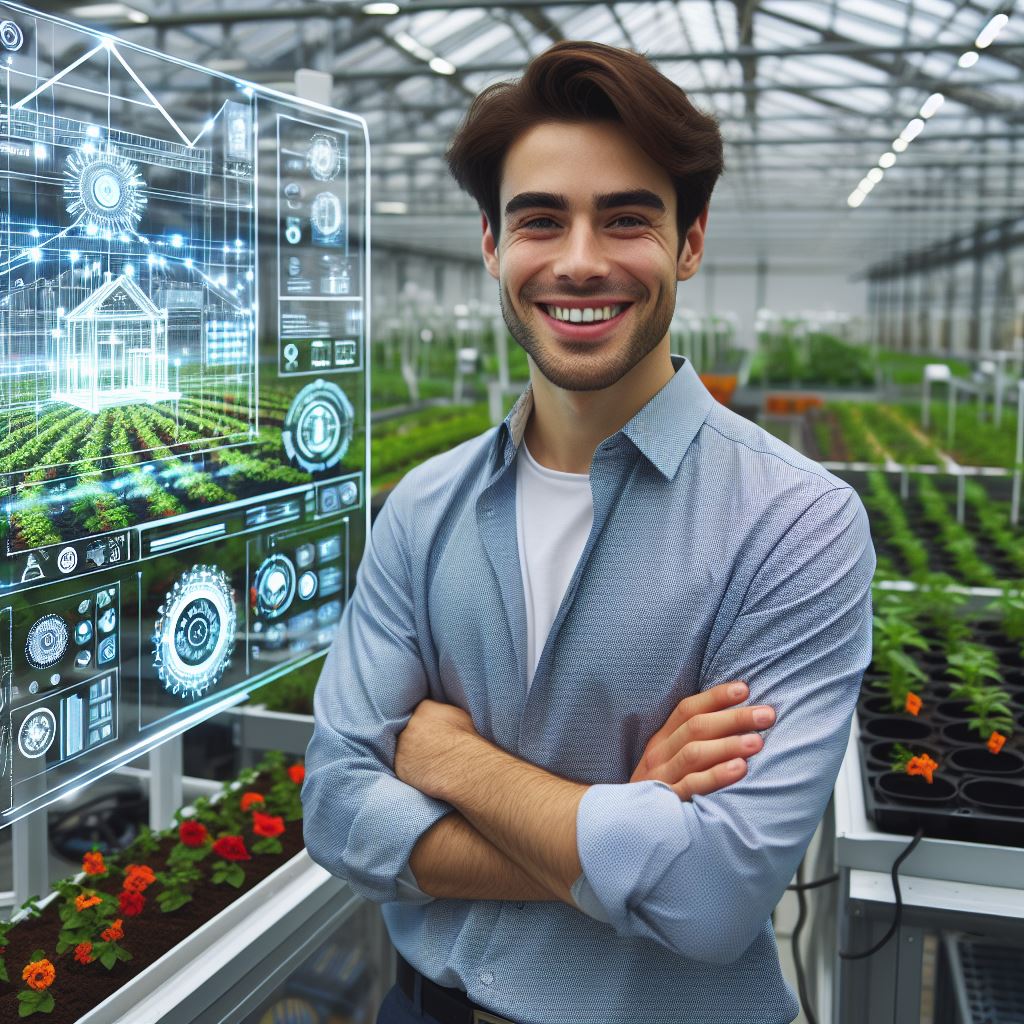
Advanced Technologies for Next-Gen Greenhouses
Advanced technologies are transforming the landscape of greenhouse farming.
With the rise of automation, greenhouses are becoming more efficient, productive, and sustainable.
In this section, we will explore three key advanced technologies that are shaping the future of next-gen greenhouses: sensor technology, automated irrigation systems, and robotic systems.
A. Sensor Technology
Sensors play a vital role in maintaining optimal conditions inside greenhouses.
They provide real-time data on various environmental factors that significantly impact plant growth and development.
Temperature, humidity, and CO2 sensors are commonly used in greenhouses to monitor these crucial parameters.
The collected data from sensors is then analyzed to make informed decisions for greenhouse operations.
By continuously monitoring and adjusting environmental conditions, farmers can optimize crop growth, increase yield, and reduce resource wastage.
This data-driven approach helps create an ideal growing environment for plants, leading to healthier and more productive crops.
B. Automated Irrigation Systems
Irrigation is a critical factor in greenhouse farming. Proper water distribution ensures that plants receive the right amount of moisture for optimal growth.
Traditional irrigation methods can be time-consuming, inefficient, and prone to human error.
Automated irrigation systems have revolutionized the way water is distributed in greenhouses.
These systems use sensors to measure soil moisture levels and automatically adjust water delivery accordingly.
By providing precise water amounts directly to plant roots, automated irrigation systems enhance water-use efficiency, minimize water waste, and promote healthy plant growth.
Moreover, these systems can be programmed to deliver water at specific intervals or based on plant requirements, resulting in improved resource allocation.
Farmers can remotely monitor and control irrigation systems, ensuring that plants receive the right amount of water at the right time, even when they are not physically present in the greenhouse.
Showcase Your Farming Business
Publish your professional farming services profile on our blog for a one-time fee of $200 and reach a dedicated audience of farmers and agribusiness owners.
Publish Your ProfileC. Robotic Systems
Robots have found numerous applications in greenhouse farming, augmenting the capabilities of human operators and reducing manual labor requirements.
These robots can perform a wide range of tasks, including planting, harvesting, and crop monitoring.
The use of robots in these labor-intensive tasks increases efficiency, reduces production costs, and minimizes the risk of human error.
For example, robots can precisely plant seedlings at the optimal spacing, ensuring uniform growth and maximizing space utilization.
They can also accurately harvest ripe crops, minimizing damage and reducing post-harvest losses.
Additionally, robots enable continuous crop monitoring by collecting data on plant health, growth rate, and disease detection.
Real-time monitoring allows farmers to promptly address any issues, preventing potential crop losses and ensuring timely intervention.
In short, advanced technologies like sensor technology, automated irrigation systems, and robotic systems are revolutionizing greenhouse farming.
These technologies provide farmers with real-time data, precise control over environmental conditions, and increased efficiency in various aspects of greenhouse operations.
With automation playing a key role, next-gen greenhouses are poised to enhance productivity, sustainability, and the overall success of greenhouse farming.
Read: Moisture Sensors: Boosting Crop Yields
Case Studies of Successful Next-Gen Greenhouses
Automation in agriculture has brought a wave of innovation, transforming traditional greenhouses into futuristic next-gen facilities.
Several real-life examples highlight the success of these automated greenhouses:
A. Sundance Farms
This cutting-edge greenhouse in California has implemented advanced automation technologies.
Through the use of automated irrigation systems, Sundance Farms has significantly reduced water usage while ensuring optimal plant hydration.
Their automated climate control system precisely adjusts temperature, humidity, and ventilation for each specific crop, resulting in improved yields and reduced energy consumption.
B. Urban Greens
Located in the heart of a bustling city, Urban Greens utilizes automation to maximize space and efficiency.
Vertical farming systems and robotic planters allow them to grow a wide variety of crops in a limited urban setting.
Automation further aids in monitoring and adjusting environmental conditions, ensuring ideal growth parameters for the plants.
C. Evergreen Horticulture
This large-scale greenhouse operation in the Netherlands is a shining example of automation-driven success.
Through the use of robotic harvesters and sorters, Evergreen Horticulture has streamlined their operations, reducing labor costs and improving productivity.
Automated pest control mechanisms have significantly minimized the need for harmful pesticides, making their practices more sustainable.
D. GreenTech Organics
Specializing in organic produce, GreenTech Organics focuses on sustainable practices using automation.
They employ automated nutrient delivery systems that precisely provide required nutrients to each plant, ensuring optimum growth.
This automated approach has helped them achieve higher yields while minimizing resource wastage.
These case studies show how automation has revolutionized the operations of next-gen greenhouses, emphasizing improved yields, reduced costs, and sustainable practices.
Read: Irrigation Apps: Tech at Your Fingertips
Challenges and Future Trends
In the world of greenhouse farming, the adoption of automation has its fair share of challenges.
However, with advancements in technology, these challenges are being overcome, paving the way for a future of next-gen greenhouses.
A. Challenges Faced in Adopting Automation in Greenhouse Farming
- Lack of awareness and understanding: Many farmers are skeptical about the benefits of automation and are hesitant to adopt new technologies.
- High initial investment costs: Setting up automated systems can be expensive, making it a barrier for small-scale farmers with limited resources.
- Complexity and technical expertise: Implementing automation requires specialized knowledge and skills, which might not be readily available in the farming community.
- Integration with existing infrastructure: Retrofitting automation systems into traditional greenhouses can be challenging and may require significant modifications.
- Resistance to change: Farmers who are used to traditional farming methods may resist the transition to automated systems.
B. Potential Solutions and Advancements in Automation Technology
Despite these challenges, the potential solutions and advancements in automation technology offer a promising future for greenhouse farming.
- Education and awareness campaigns: Promoting the benefits of automation and providing training programs can help farmers understand and embrace the technology.
- Cost-effective automation options: Developing affordable and scalable automation solutions will make them more accessible to small-scale farmers.
- Simplified user interfaces: User-friendly interfaces and intuitive controls will enable farmers to easily operate and manage automated systems.
- Modular and adaptable designs: Automation systems that can be easily integrated into existing greenhouse infrastructure will facilitate the transition to automation.
- Remote monitoring and control: Advanced sensors and connectivity technologies allow farmers to remotely monitor and control greenhouse conditions.
C. Predicted Future Trends in Next-Gen Greenhouses and the Scope of Further Automation:
With these solutions in place, the future trends in next-gen greenhouses look promising.
- Improved energy efficiency: Automation can optimize energy usage and reduce greenhouse gas emissions, making greenhouses more sustainable.
- Precision agriculture: Advanced automation systems enable precise monitoring and control of plant growth parameters, leading to higher crop yields and quality.
- Artificial intelligence and machine learning: Integrating AI and ML algorithms can automate decision-making processes and improve productivity.
- Autonomous robots and drones: Robotic systems can perform tasks such as harvesting, seeding, and monitoring, reducing the need for manual labor.
- Vertical farming: Automation can enable efficient vertical farming techniques, allowing for higher crop densities and maximizing land utilization.
- Smart data analytics: Collecting and analyzing data from automated systems can provide valuable insights for optimizing greenhouse operations.
The possibilities for further automation in next-gen greenhouses seem limitless.
As technology continues to evolve, we can expect even more innovative solutions to revolutionize greenhouse farming.
In fact, while challenges exist in adopting automation in greenhouse farming, the future looks promising with potential solutions and advancements in automation technology.
Predicted future trends indicate improved sustainability, precision, AI integration, robotics, and smart data analytics.
With each advancement, next-gen greenhouses will become more efficient and productive, paving the way for a greener and more sustainable future of agriculture.
Conclusion
Automation in greenhouse farming provides numerous benefits such as increased efficiency, improved crop quality, and reduced labor costs.
Next-generation greenhouses play a crucial role in meeting the growing global food demands, ensuring food security, and reducing the environmental impact of agriculture.
It is imperative for farmers, researchers, and investors to continue exploring and investing in automation technologies for sustainable agriculture.
By doing so, we can further enhance food production, reduce waste, and conserve resources.
With the constant evolution of automation, the future of greenhouse farming looks promising.
It presents an opportunity to revolutionize agriculture and create a more sustainable and efficient food system.
By adopting automation in greenhouses, we can not only overcome the challenges of traditional farming but also contribute to a greener and healthier planet for future generations.
It is essential that we embrace and support the development and implementation of next-gen greenhouses to ensure a sustainable and secure food supply for the years to come.
Let us continue to invest in research and innovation to harness the full potential of automation in agriculture and create a sustainable future for our planet.

